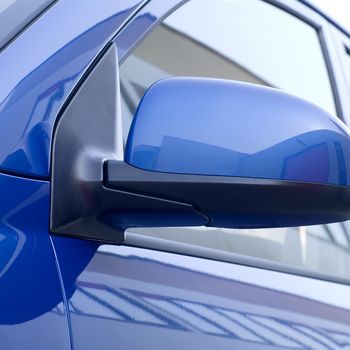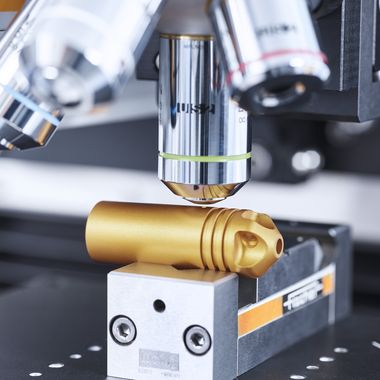
In the automotive industry paint coatings are used as protection from corrosion and external damage. These lacquers are exposed to environmental influences such as extreme temperature fluctuations or moisture and salt. In addition, automotive coatings must exhibit a certain toughness to make them resistant to stone chips and scratches, for example in car washes. This requires the right balances between hardness and elasticity.
Car paint has to fulfill different functions and possesses therefore various properties. A quick differentiation and determination of its properties is possible with the characteristic parameters obtained from the instrumented indentation test.
The Martens hardness (HM) and the Martens hardness after creeping (HMCR) are values which specify plastic and elastic properties of the paint coating. The indentation hardness (HIT) considers only the plastic portion of the material deformation. The hardness parameters provide conclusions about aging, curing, cross-linking, embrittlement through UV radiation, hardness change through temperature influences and the degree of polymerisation of the lacquer.
One of the most important advantages of the instrumented indentation test is the determination of elastic properties. Parameters like the modulus of indentation (EIT), elastic recovery (hIT), creep at maximum load (CIT 1) and creep at minimum load (CIT 2) can be detected using this method. The parameters described above allow various conclusions regarding visco-elastic properties of lacquer coatings. These in turn show the vulnerability of the lacquer against weather influences, its susceptibility to rockfall, the ability to heal in case of scratches and the reflow behaviour.
| Sample | HM [N/mm²] | hIT [%] | C IT 1 [%] | C IT 2 [%] | E IT [kN/mm²] |
|---|---|---|---|---|---|
| A (mean) | 42,9 | 23,4 | 18,4 | -10,6 | 1,39 |
| STD | 1,2 | 0,8 | 0,2 | 0,3 | 0,1 |
| B (mean) | 143 | 45,7 | 6,1 | -9 | 3,07 |
| STD | 5,6 | 0,4 | 0,1 | 0,3 | 0,1 |
Using the FISCHERSCOPE® HM2000 makes the determination of material characteristics like surface hardness, crosslinking, elastic modulus and healing behaviour in case of scratches simple and easy. In this manner, several chemical process parameters can be determined quickly during manufacturing or hardening of automotive paint coatings. Your local FISCHER representative will be happy to answer further questions.
